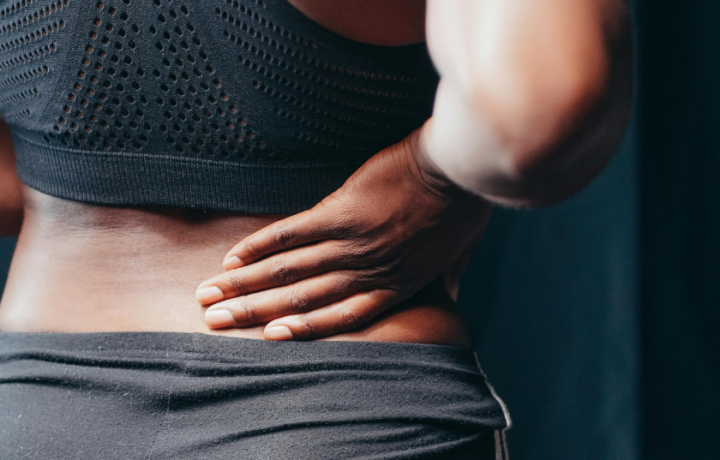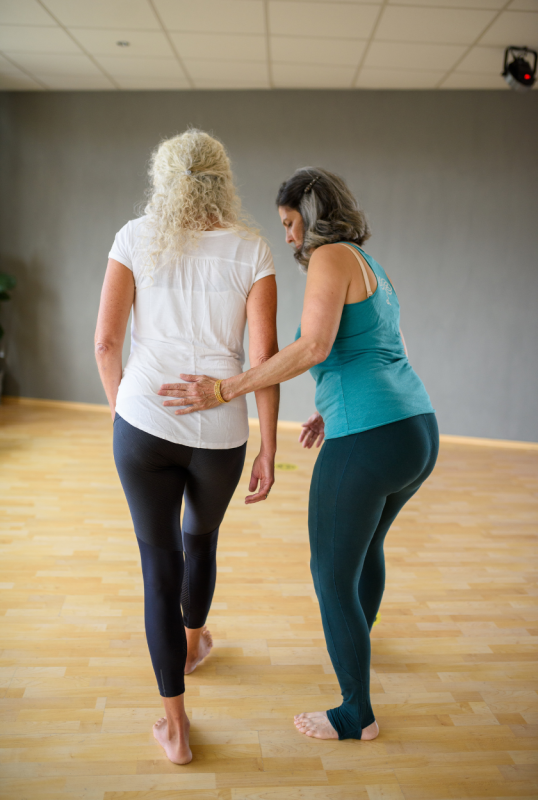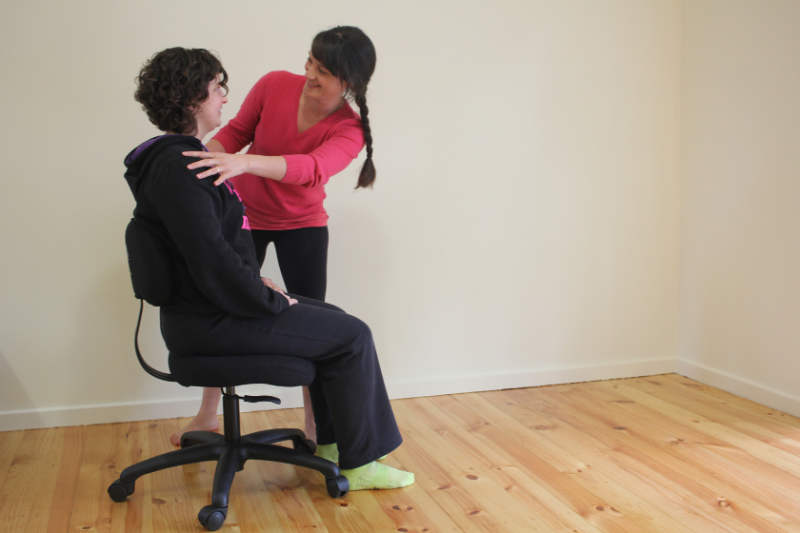The surprising reason four million Australians have back pain (and how to fix it)

Posted on
There were times when, after dropping her children at school for the day, Emily would have to lie down for a few hours to recover.
Along with prescription painkillers, it was the only way she could alleviate her excruciating back pain. The impact on her life was staggering. At the age of 31, she was unable to bend down to tie her children’s shoelaces without experiencing blinding pain.
The pain had been going on for years. It was after the birth of her third child six years ago that Emily’s pain went from manageable to debilitating.
Scans showed herniated and bulging discs pressing on nerves in her spine – but no one could explain why it was happening.
“Driving was painful, walking was painful, exercising was painful. All the things you’re supposed to do to keep yourself fit and healthy were mostly out of the question for me,” she says.
“I’d seen a surgeon about having surgery…I would take a lot of painkillers. I tried probably three or four prescription painkillers, but I don’t think any of them were that successful in helping.”
Emily was one of the estimated four million Australians living with back problems (the third leading cause of disease burden). But that changed when a friend told Emily about something she’d had success with for her own back pain – the Gokhale Method.
“I did think ‘This looks a bit hippie’, but I would have tried anything,” says Emily.
She enrolled in a three-day Gokhale Method course to address the root cause of her disc problems: her everyday movement habits.
“It’s just little tweaks to the way people sit, the way they sleep, the way they stand,” says Canberra Gokhale Method teacher Tegan Kahn.
“If your car’s wheels are out of alignment, the tyres wear out faster. It’s the same with your body. And pain is the body’s way of alerting you to the damage.
“Emily had a habit of tucking her pelvis and rounding her lower back– something I used to do, too, and which many people do without realising. That position puts pressure on one side of the spinal discs, causing them to bulge. Once I showed Emily how to reposition her lower back and pelvis to decompress her discs, her pain started to go away.”
After two months of practicing the Gokhale techniques, Emily was completely off the prescription painkillers she’d been taking daily.
“For the first time, I felt like I had the toolkit to alleviate the pain because I understood the mechanics of why I was in pain,” Emily says.
12 months later, she is back to being able to do everyday tasks people take for granted like driving long distances and standing for long periods at a party.
“I can pick things up off the floor again without feeling like I need to work myself up to it,” she says.
A different way of moving

Esther Gokhale coaches a student in ‘glidewalking’.
The Gokhale Method was founded by Esther Gokhale, who has been dubbed “The Posture Guru of Silicon Valley” by The New York Times. The method is about relearning to move in accordance with the body’s natural blueprint, says Tegan.
Ms Gokhale (who studied biochemistry at Harvard and Princeton and, later, acupuncture at the San Francisco School of Oriental Medicine) developed the Gokhale Method after she experienced crippling back pain during her first pregnancy and unsuccessful back surgery at the age of 27. After extensive research and study in the field of back pain, Esther travelled the world seeking non-surgical solutions.
She knew that many traditional cultures have very low rates of back pain. Her visits to villages in India, Western Africa, and Brazil helped her see the link between pain levels and how people move through daily tasks like bending, sleeping, and walking.
“In many societies, people still know how to move in the way our bodies are built to – ways that don’t cause pain,” Tegan says.
So why do four million Australians have back pain?
“We’ve just lost touch with how we are meant to move,” explains Tegan. “A big part of that is the change in furniture fashions that happened in industrialized countries just after World War I. The shape of our chairs started to change, our strollers changed, our highchairs changed. And those changes slowly reshaped the way we habitually sit and stand.
“Humans aren’t born with a user’s manual; we copy what we see and if the people around us are slumping into poorly designed furniture, that becomes our ‘normal’.
“Learning the Gokhale Method is like discovering your user manual;we help people step-by-step to relearn healthy posture and movement patterns.”
A six-minute video that changed everything

Tegan Kahn coaches a student in sitting.
Tegan discovered the Gokhale Method through her own family’s struggle with chronic back pain.
Her mother experienced two serious car accidents (which saw her break several vertebrae, her pelvis and sternum, and sent her into a three-day coma) before Tegan was born. She had accepted pain as a permanent part of her life.
With a Master’s Degree in medical science, Tegan and her mum tried everything from massage to acupuncture and Bowen therapy. Coming across Esther’s TEDTalk on YouTube while doing some research into her own tendinitis, Tegan decided to take her mum along to a class.
“By the end of the six-minute TEDTalk, I was like, ‘Why hasn’t anyone told me this before?’ It seemed too good to be true,” she says.
“One hour into the first Gokhale lesson, my mum turned to me and said, ‘This is the longest I’ve sat for 30 years without being in pain.’ And that’s when I decided to go to California to train with Esther so I could share this life-changing method with Canberrans who need it.”
Over the last eight years, Tegan has taught the Gokhale Method to over 500 students – teaching them how to walk, sit, bend, lift and even lie down in ways that protect the back rather than wearing and tearing it.
“When you’re sitting or lying down, we teach you how to introduce a really gentle stretch to your back muscles to decompress all the discs in the spine and allow the back muscles to relax,” she says.
“You can incorporate all the Gokhale techniques into activities you’re already doing –you don’t have to put aside extra exercise time. It’s pretty great when you can treat your back while you’re sleeping, or sitting at your computer.”
And while Emily still has the occasional sore back, she says she now has techniques to address it immediately so she can live her life the way she wants to.
“My life has changed dramatically. I’m not even thinking about going back to the surgeon and I’m not taking prescription medication anymore,” she says.
“Imagine if I’d known about this 15 years ago, when I first started getting back pain. I could have stopped it getting worse, which would have been nice. But I’m so glad I found it in the end.”
More information about the Gokhale Method can be found at gokhalemethod.com
Images supplied.

